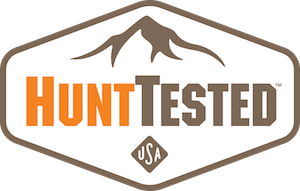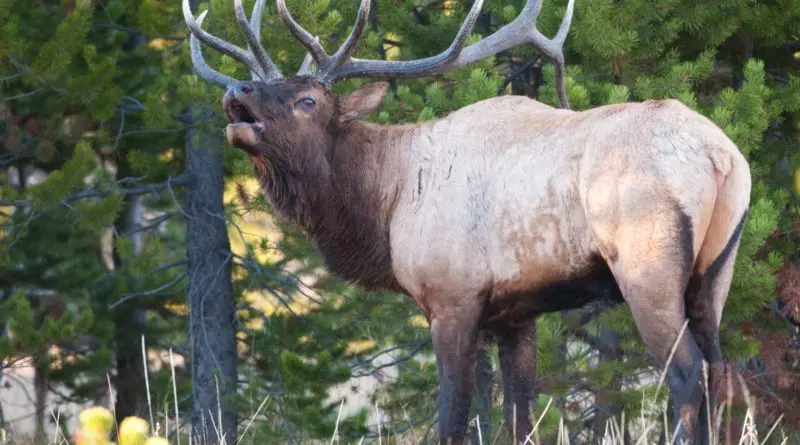The Ultimate Elk Hunting Gear List
Elk hunting requires a lot of gear and careful planning. The complexity comes from all the factors that you have to consider when planning your hunt. If you ask me, it’s a big part of the fun of the trip. To help you plan your next or first elk trip we’ve compiled this ultimate elk hunting gear list.
Elk Hunting Gear falls into three main categories
- Gear for camping
- Gear for the hunt itself
- Game processing and retrieval, (It turns out that it’s helpful to have a plan for getting a 700+ pound animal off the mountain if you’re successful).

In this article, we’re going to take a look at how your type of hunt affects your gear requirements and review a sample gear list to give you some ideas to consider as you plan for your hunt.
The gear you need for your elk hunt is going to vary significantly depending on the location, time of year, and type of hunt.
Types of Elk Hunts
The Bivy Elk Hunt
This is a hunt for minimalists who like to rough it. The name comes from the bivy sack that you sleep in at night. A big benefit of this type of hunt is you can cover more ground and camp where you find elk. It also requires that you are in top physical shape.
I think a bivy hunt is one of the more interesting hunts to plan because it’s a game of ounces. Generally speaking the lighter the gear, the more it costs. Because you’re carrying your entire camp with you, every ounce matters so buy the best ultralight gear that your budget allows. You need to bring the essentials, but not so much that your pack is too heavy. A general rule of thumb is to carry no more than a third of your body weight.
Pro Tip: It’s one thing to try on your fully loaded pack in your garage and think you can handle the weight; it’s a different story when you’re hiking for hours at 11,000 feet. Take the time to optimize your load at home. Load your pack, and then go on some long hikes with it at home to really get a sense of how it feels before your trip.
If you’re interested in a backcountry bivy hunt, Cam Hanes wrote the definitive guide on the subject in his book, Backcountry Bowhunting. If you’re going to read one book on elk hunting, Cam’s book should be the one. If you take an elk on a bivy hunt and pack it off the mountain, you will definitely feel like you earned it!
The Drop Camp Elk Hunt
The drop camp is a great middle-ground between a complete DIY adventure and a fully guided hunt. It’s for people who know how to hunt and can do most of the work themselves. Including cleaning, quartering, and packing their elk back to camp.
The typical drop camp hunt will include packing you and party into a camp on horses, and your outfitter will also have a combination of pack horses, mules, and sometimes a donkey to carry your gear. A benefit of a drop camp-style hunt over truck camping is you’ll be able to access designated wilderness areas where vehicles are not allowed. This can make a big difference in the amount of hunting pressure you experience.
Drop camps will typically come complete with wall tents, cots, tables, chairs, and a water supply nearby at a minimum. Some drop-camps will also provide cooking gear, firewood, and sometimes food. Every outfitter will have its own specifics so be sure to check to see what’s including in the price.
As the drop camp has most of the camping gear covered, (you’ll want your own sleeping bag), you can focus on your hunting gear and game processing and retrieval gear. Most outfitters will limit you to about 50 pounds of gear per person, not including your rifle or bow.
A less expensive variation of the drop camp is to just rent some horses and pack animals and bring your own tents and camping gear. The con of renting horses over a drop camp is you will either need to tend to your horses for the duration of your hunt or you will need to return them and hike back in on foot, (I’ve done this and don’t recommend it). Either way, it is a lot more work than a drop camp.
Pro Tip: If you’re planning a hunt that involves horses, find someplace where you can learn some basic horsemanship before you go, it will make you and your mount a lot more comfortable.
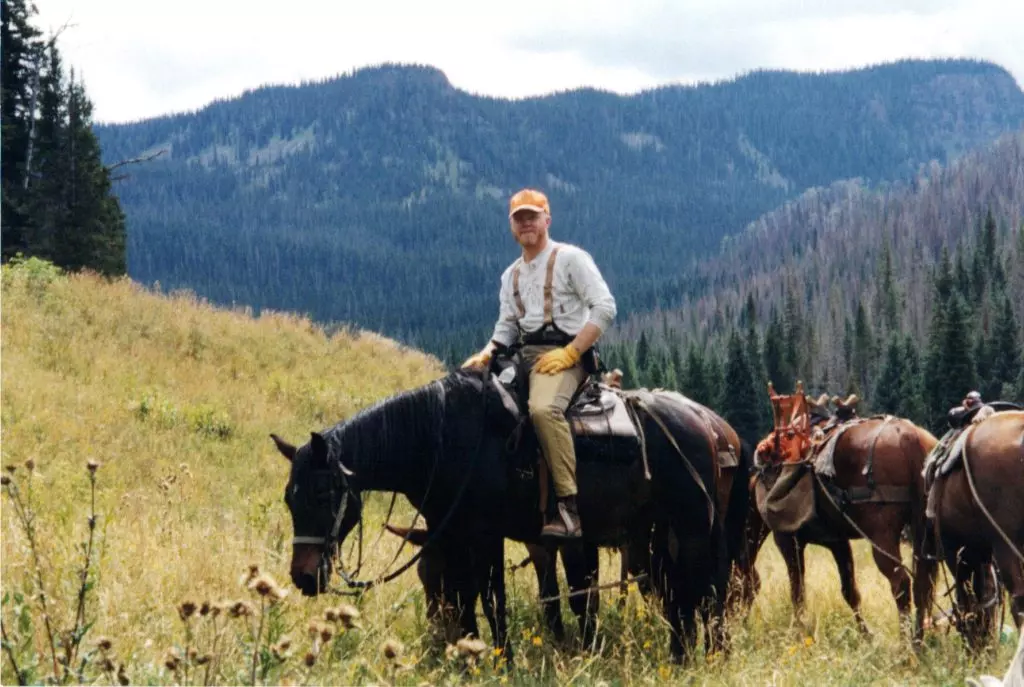
The Fully-Guided Elk Hunt
A fully-guided hunt offers everything that the drop camp offers, with three big additions:
- You’ll have a camp cook to prepare meals.
- An expert guide to help put you on elk.
- A Professional to help with game processing and getting your elk off the mountain.
Fully-guided hunts can be expensive, and they’re worth the investment. You’ll have a team that’s working hard to show you a good time and hopefully helps you find an elk. If you’ve never elk hunted before, you could consider a fully guided trip investment in your elk hunting education. You’ll learn more by hanging out with a good guide in the mountains for a week than you will by watching thousands of hours of elk hunting videos.
Gear considerations are similar to a drop camp, but you won’t have to worry about food and you’ll likely be able to leave the pack frame at home.
If you’re considering a drop camp or a fully-guided hunt, BookYourHunt.com is a great place to start your search for a reputable outfitter.
Truck Camping Elk Hunt
Truck camping offers the best combination of low cost and accessibility, and many public hunting areas across the West allow motorized vehicles. You can carry significantly more gear and set up a very comfortable camp when truck camping, and you can go as basic or as extravagant as you like.
Truck camping also allows you to haul in an ATV which can be a great help with game retrieval. Just make sure you stay on designated trails. On the truck camps that I’ve been a part of, instead of a tent, we used a snowmobile trailer as a shelter. Once we back the ATV out and remove the camping gear, we roll out a piece of carpet and set up our cots and sleeping bags. We then set up a large tent for our kitchen and a large gear tent. It’s been a great setup.
Pro Tip: The downside of truck camping is because of the ease of accessibility you can have a lot of hunting pressure. The key to success in these areas is to get off your ATV and burn some boot leather. You need to get away from the crowds and get off the beaten track to find elk.
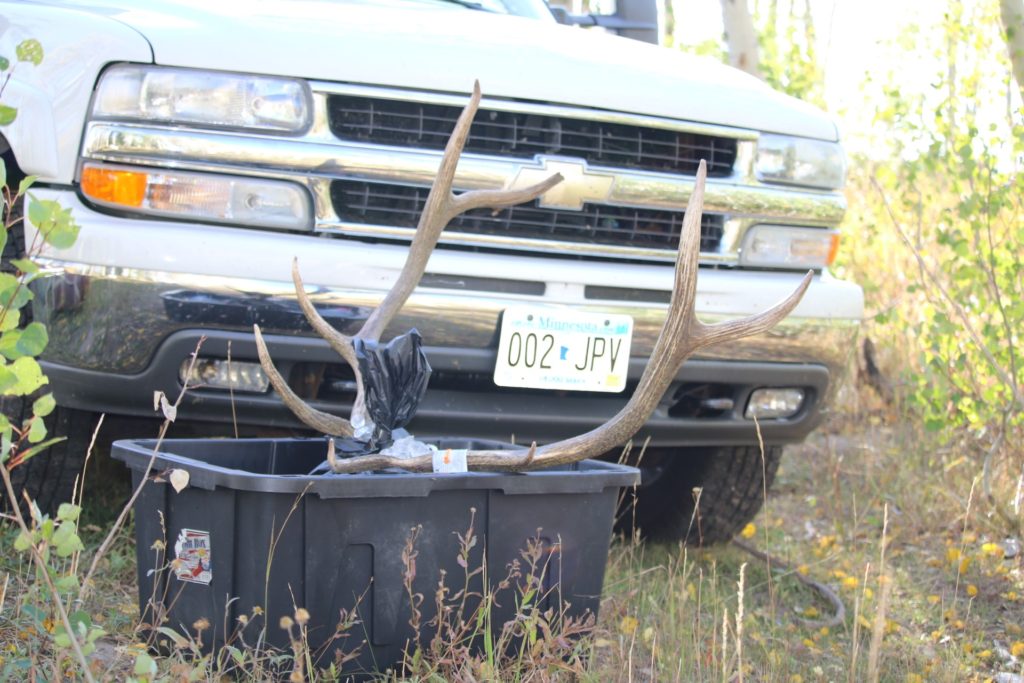
Food
Unless you’re on a fully guided hunt you’re going to have to plan for your own food and cooking. For bivy hunts, freeze-dried food and a Jet Boil are the way to go. It’s easy, super lightweight and the freeze-dried meals today are actually pretty good. Mountain House is a popular brand. You’ll need to find a water source and need a system to filter water. I prefer the gravity-fed filtration systems like this one from Life Straw.
For non-bivy hunts, I’ve found that planning simple meals and precooking as much as I can, and freezing in vacuum bags is the way to go. I’ve tried cooking more elaborate meals in camp after hunting all day, but I’ve found that I prefer a simple meal that requires little work so I can eat and then hit the rack.
Elk Hunting Food List:
Here’s a food list from a recent truck camping hunt.
- Oatmeal packets (Instant)
- Cereal bars
- Coffee packets (Starbucks Via makes excellent instant coffee)
- Precooked chicken, tortilla, shredded cheese
- Instant rice
- Mac & cheese
- Hard cheese
- Hard salami and ham
- Peanut butter
- Pita bread and standard wheat bread
- Tuna and chicken pouches
- Bottled water
- Butter
- Ramen and Canned Soup
- Paper towels
- Ziplock bags
- Carrots
- GORP
- Apples
- Beef jerky
- Emergen-C drink additive
- Energy bars
Elk Hunting Gear List:
Here’s a gear list that was designed around a truck camp archery hunt in Colorado.
Archery Gear
- Arrows
- Bow (Matthews Halon 32 with Blackgold Sights)
- Broadheads
- Release – a spare (If you lose your release on the mountain and don’t have a backup, it’s game over)
- Sling
- String wax
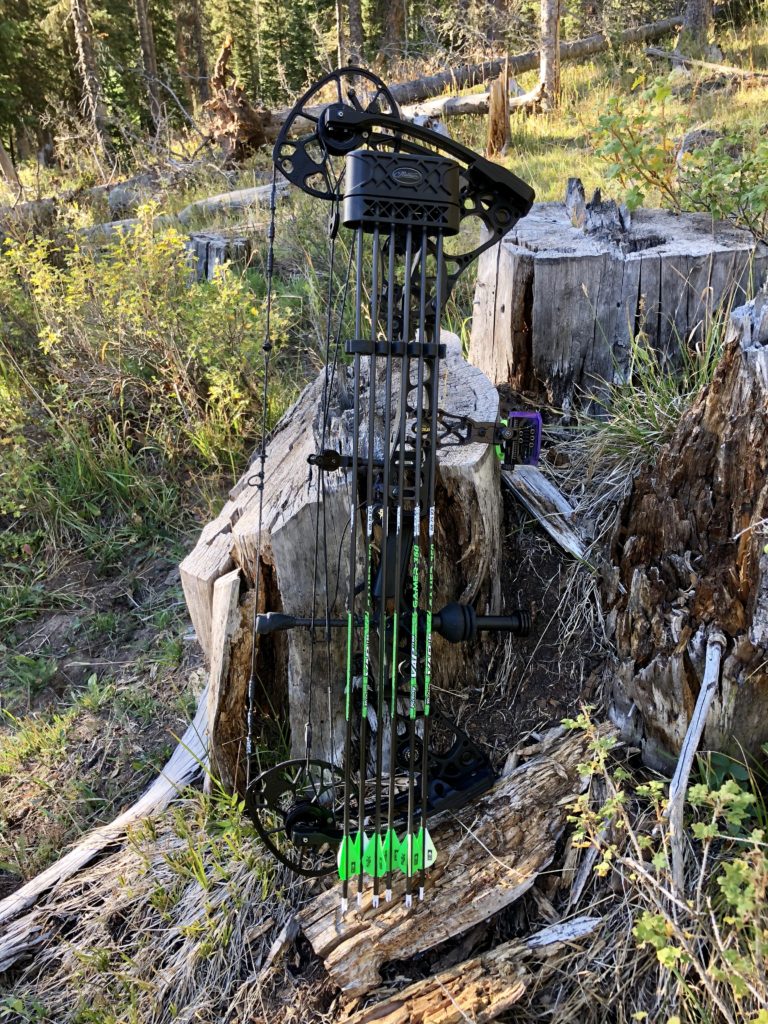
Items to carry in Day PackI’ve tried multiple pack options for elk hunting. Right now my current favorite pack set up is the Metcalf from Mystery Ranch. I like that I can use it as a daypack, or load it up for bivy hunting and that it allows me to carry the first load of meat back without having to hike back for a frame pack.
- Allen wrench
- Bivy Sack
- Bivystick Satellite Communicator
- Camera
- Compass, map, Garmin Oregon, (extra batteries)
- Elk calls (Mac Daddy, diaphragm calls, Hoochie Mama)
- Elk license
- Extra boot laces
- Extra socks
- Fire (Bic, fire steel, matches. (container with petroleum jelly cotton)
- First aid kit (small)
- Gutting gloves
- Hand sanitizer
- Headlamp, flashlight, and extra batteries
- Leatherman
- Marking Tape
- Montana Decoy
- Moleskin (for blisters)
- MTN OPS Enduro Trail Packs to provide some flavor for my water and to help increase my endurance, Raspberry flavor is a favorite!
- MT050 rain gear (By Cabelas)
- Paracord
- Rangefinder with a fresh battery
- Swarovski Binoculars in Alaska Guide Creations case
- Toilet paper
- Wallet
- Water bottle and Lifestraw
- Wind indicator
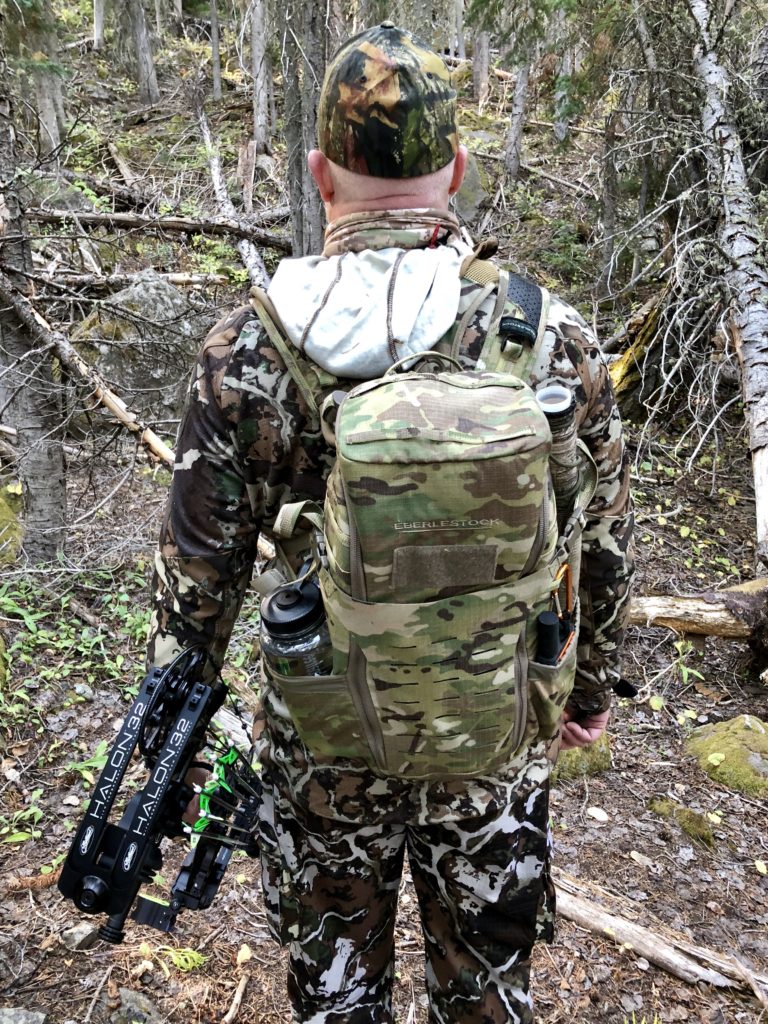
Sleeping Gear
- Earplugs (some of my hunting buddies snore)
- Pillow
- Sleeping cot
- Sheet
- Sleeping bag
- Sleeping pad
Toiletries
- Toothbrush and paste
- Emergency Filling Material (I like to be prepared)
- Scent Shield soap
- Scent Shield spray
- Wet Wipes- scent-free
- Towel and washcloth
Clothing
- Belt
- Boots x2 (Meindl and Danner)
- Camp clothes – shorts, t-shirts, camp pants
- Camp shoes
- Dirty clothes sack
- Gaiters
- Gloves
- Hat
- Hiking socks x each day
- Hunting jacket Berber
- Hunting jacket lightweight
- Hunting pants – First Lite Obsidian Pants
- Hunting shirts long sleeve x 5
- Hunting shirts short sleeve x 5
- Non-cotton underwear x each day
- Rain gear (in daypack)
- Stocking cap
- Clean street clothes for the ride home
Camping Gear
- Army shovel
- Camp chair
- Can opener
- Coffee cup
- Dish soap
- Frying pan etc
- Garbage bags (leave no trace)
- Hatchet
- JetBoil Flash and 4x gas cans
- Luggable Loo
- Paper plates and bowls
- Paper towels
- Propane canisters X 6
- Propane lantern in the case and extra mantels
- Propane Shower (Zodi), five-gallon pail, and mat to stand on (Extra Batteries)
- Small washtub and pot scrubber
- Small white cutting board and camp knife
- Toilet paper
- Utensils
- Water jugs (2 x 5 Gallon)
- Yeti 50 Cooler and 6 ice jugs
Game Processing
- Frame pack
- Game bags
- Knives (Knives of Alaska and Havalon)
- Small tarp
- Black pepper (Critical for fly control)
- Wyoming saw
- 120-quart coolers (2) (You can fit a quartered elk in two 120 quart coolers if you bone out your elk you can get by with one cooler)
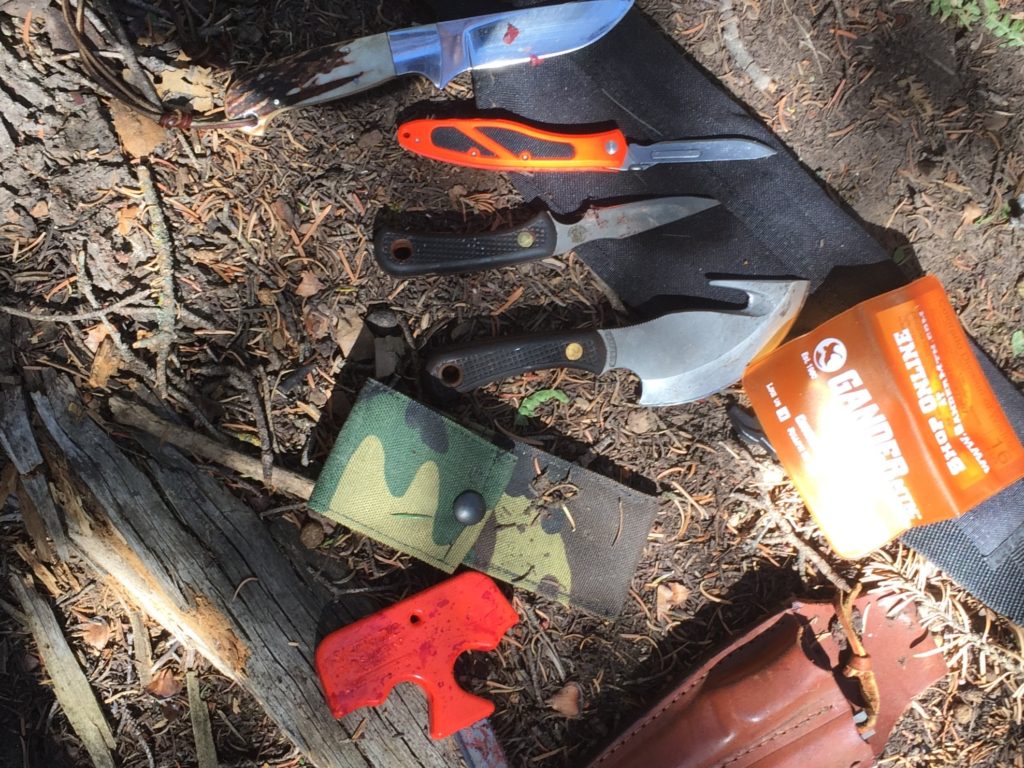
Conclusion
Hopefully, this has given you some ideas to consider when you’re planning your next hunt. When you’re on the mountain you’re out of luck if you forgot a key piece of equipment, so a little advance planning and preparation can help ensure that you have a great hunt. Good Luck!
Note: HuntTested may receive a small commission if you purchase a product from the links on this page. This does NOT increase your price and helps to pay for the content you’re enjoying.
